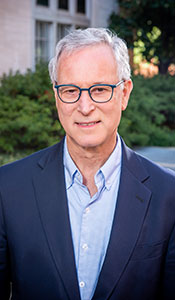American Society of Human Genetics Meeting and Alabama NF Walk
Last month, several colleagues from UAB attended the American Society of Human Genetics meeting in Orlando (ASHG). The ASHG is the primary worldwide professional membership organization for human genetics with the mission of advancing genetics research by promoting the exchange of research findings at annual meetings, advocating for research support, and enhancing genetics education for current and future professionals in the field. Several faculty members from the UAB NF research program gave poster presentations at the meeting, including NF Program Genetic Counselor Ashley Cannon, PhD, MS, CGC, and Associate Professor of Genetics Deeann Wallis-Schultz, PhD, as well as several other members of our research team. These presentations served as an opportunity to bring attention to our role as a national leader in advancing innovative NF research initiatives.
Our program was again pleased to support the 4th Annual Alabama NF Walk, which occurred on November 5th in Veteran’s Park in Hoover. Held in cities across the nation, the walk serves as a key fundraising event for the Children’s Tumor Foundation (CTF), the major source of patient advocacy and research support for all forms of NF in both children and adults. This year’s walk raised over $30,000 and gathered individuals and families from Alabama as well as surrounding states. To learn more about the Alabama Walk visit: https://join.ctf.org/hoover/events/2017-alabama-nf-walk/e130144.
Muscle Involvement in NF1
An area of interest that we haven’t discussed previously is whether there is a direct involvement of muscle in NF1. The primary manifestation of NF1 involves nerves affected by the growth of tumors. Because nerves control muscles, one might expect some muscle weakness due to impairment of a nerve by neurofibroma growth. For example, a plexiform neurofibroma located on a spinal nerve could result in weakness of muscle innervated by that nerve.
There is, however, evidence now that there can be muscle involvement that is not related to a nerve sheath tumor. Many children with NF1 exhibit low muscle tone, which usually becomes apparent between the ages of 2 and 5. Low muscle tone results in muscles that feel looser or more lax than normal, although muscle strength is typically within normal limits. Some children with low muscle tone tire more easily as a result of the condition. Also, the bellies of some children may protrude and give the appearance of a potbelly. This protrusion is due to abdominal and spinal muscles that are laxer than normal, not as a result of being overweight in most cases. Low muscle tone should not affect one side more than the other, and the problem usually gradually improves by adolescence. However, these individuals retain relatively poor coordination compared to their peers.
For a long time it was assumed that low muscle tone in children with NF1 could be due to a central nervous system problem related to neurological pathways to the muscles. In recent years, increased attention to this issue has resulted in studies of muscles in individuals with NF1, which have shown some abnormalities of the function of muscle cells themselves. These findings suggest that something may be occurring in muscle cells, although it is not known in what ways the NF1 gene is affecting the muscle.
Parents of children affected by low muscle tone often ask if anything can be done to improve the condition. Physical therapy is often the recommended approach for improving the muscle tone and strength. It is a safe and useful way to define the current level of muscle function and provide opportunities to gain strength and improve overall coordination when a child is young. There are ongoing studies focused on developing more specific treatments for low muscle tone. While these are promising for the future, physical therapy is the only current option for improvement of motor function, though in many children this improves only very gradually over a period of years.
Director's Blog
Highlights of American Society of Human Genetics Meeting, Alabama NF Walk, and a Discussion of Muscle Involvement in NF1
- Details
- Written by: Bruce Korf
